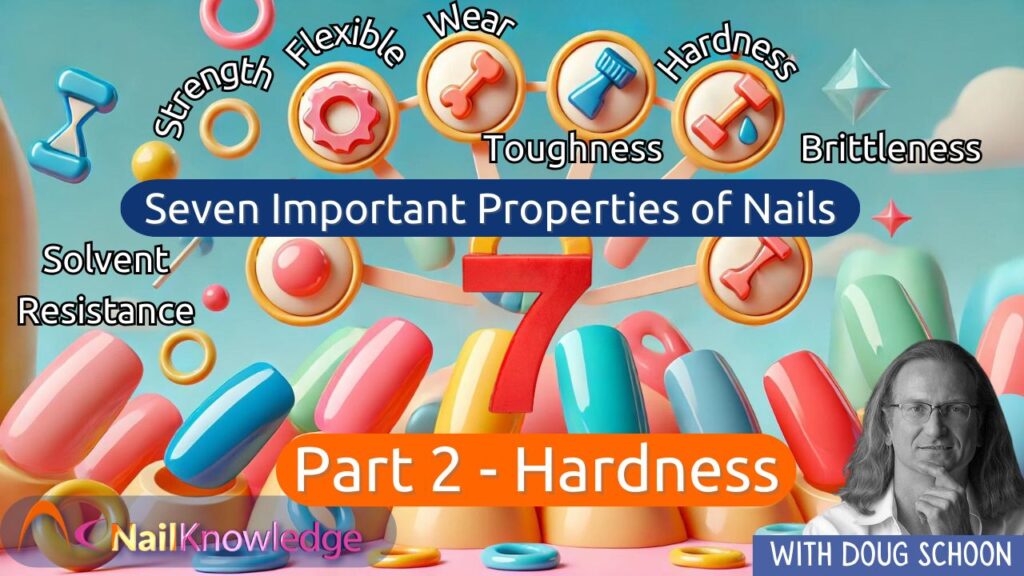Độ cứng: Tính chất quan trọng thứ hai của móng tay tự nhiên và móng tay nhân tạo
Độ cứng là gì?
Hardness is often confused with strength, yet it’s important to distinguish between these two properties. Hardness specifically refers to a substance’s ability to resist surface scratching or denting. For example, glass is easy to shatter yet has a very hard surface. Diamonds, recognized as the hardest natural substance, can scratch glass and many other materials because of their superior hardness.
When it comes to nails, both natural and artificial, the level of hardness determines how likely they are to withstand surface damage such as scratches, stains, or peeling. The hardness of a nail can be noticeably different when it becomes softer than normal, making it more vulnerable to these issues, particularly during the removal of artificial nail coatings.
Tại sao độ cứng lại quan trọng đối với móng tay
Nail plates require a balanced level of hardness. If too hard, nails can become brittle, leading to issues like cracking and splitting. Conversely, overly soft nails are susceptible to peeling and damage from routine activities. Therefore, understanding and maintaining the correct hardness is crucial for the health and aesthetics of nail plates.
The comparison between nail plates and other materials can be quite illustrative. For instance, although a diamond is extremely hard, it isn’t necessarily the ideal hardness for a nail plate. Imagine nails as hard as diamonds; they would resist scratching but could become excessively brittle and impractical for everyday use.
Tác động của chất làm cứng móng tay
Chất làm cứng móng là sản phẩm được thiết kế để tăng độ cứng của móng. Tuy nhiên, chúng phải được sử dụng một cách thận trọng. Sử dụng chất làm cứng quá mức hoặc kéo dài có thể khiến móng trở nên quá cứng và giòn. Lý tưởng nhất là chỉ nên sử dụng chất làm cứng móng để đạt được mức độ cứng mong muốn và nên ngừng sử dụng khi đã đạt được mức độ này.
This concept aligns with the balance sought in other areas of life and nature. As Confucius famously said, “The green reed which bends in the wind is stronger than the mighty oak which breaks in a storm.” This analogy highlights the importance of flexibility within hardness; nails should have enough hardness to resist superficial damage but maintain enough flexibility to avoid breakage under stress.
Những cân nhắc khi phủ móng tay giả
Artificial nails also need to consider the balance between hardness and flexibility. Overly brittle artificial nails can lead to service breakdown, such as cracking and peeling. On the other hand, if artificial nails are too flexible, they may not provide the desired look or durability. Adjusting the hardness to achieve the right mix of rigidity and flexibility can significantly enhance the performance and longevity of artificial nails.
Cân bằng độ cứng để có sức khỏe móng tối ưu
Understanding and controlling the hardness of both natural and artificial nails is crucial for ensuring optimal performance and maintaining nail health. It allows nail care professionals to tailor treatments and products to the specific needs of their clients, ensuring both beauty and functionality are achieved.
Khám phá thêm các đặc tính chính của móng tay trong loạt bài gồm 7 phần của chúng tôi:
- Sức mạnh của móng tay – Discover how the strength of nails impacts their performance and durability.
- Độ cứng của móng tay – Understand the crucial role of hardness in nail health and how to maintain the perfect balance.
- Độ đàn hồi của móng tay – Understand the importance of flexibility in preventing nail breakage and maintaining resilience.
- Độ cứng của móng – Find out what makes nails tough and how this property differs from strength and hardness.
- Móng tay giòn – Learn what causes brittleness in nails and how to prevent it.
- Khả năng kháng dung môi của móng tay – Explore how nails can resist damage from chemicals and solvents.
- Mòn móng tay – Understand the factors that affect how well nails withstand regular use and environmental exposure.


